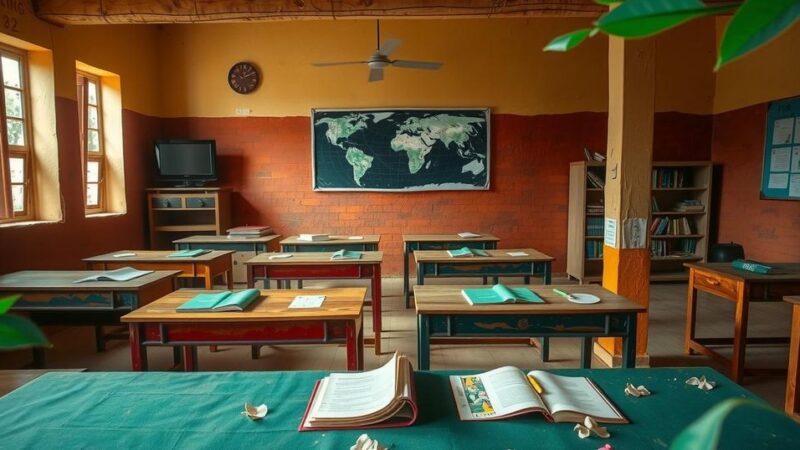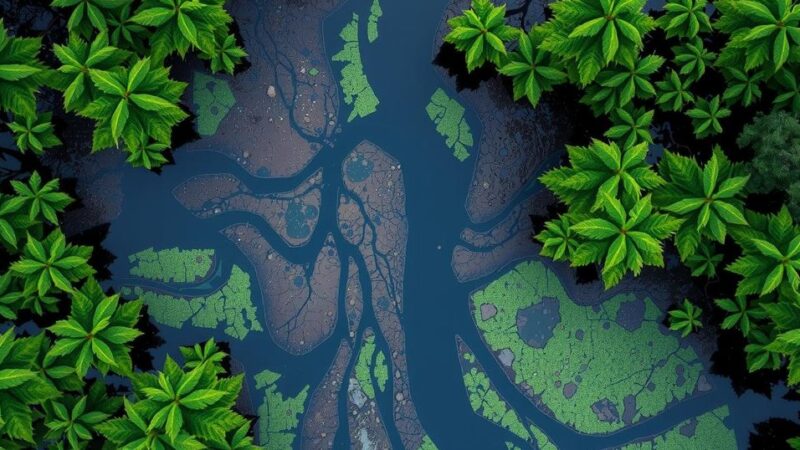Hurricane Helene inflicted significant damage in parts of Virginia and surrounding areas, raising wildfire risks due to the resulting debris. Michele Steinberg from the National Fire Protection Association highlights how the aftermath affects fire behavior and emphasizes community actions to prevent wildfires. Additionally, a forecast from Colorado State University predicts an above-average hurricane season ahead, necessitating vigilance and preparedness.
Last fall, Hurricane Helene caused significant devastation across Southwest Virginia, Northeast Tennessee, and Western North Carolina. The affected communities are still in recovery, with the lingering effects from Helene potentially amplifying the risks associated with the natural disasters typical for this region during certain times of the year. Michele Steinberg, the Wildfire Division Director at the National Fire Protection Association, notes that the aftermath of Helene has altered wildfire risk patterns due to the debris and downed trees resulting from the storm.
Steinberg elaborates on the ecological benefits of fire, which can play a crucial role in maintaining healthy ecosystems by rejuvenating soil and promoting the growth of certain plant species. She explains that natural fires can help to clear land and reduce dead foliage, which might otherwise take a long time to decompose. In the Northeastern, Mid-Atlantic, and Southern states of the U.S., spring and fall seasons are particularly conducive to wildfires due to favorable conditions.
The presence of dry vegetation and lack of moisture can create a conducive environment for wildfires, especially during sunny days. Steinberg points out that human infrastructure, such as homes and cars, can unfortunately become fuel sources as wildfires move into communities. Thus, the aftermath of hurricanes like Helene significantly increases the availability of combustible materials, raising wildfire risks.
After Hurricane Helene, communities could face heightened wildfire risks due to the excess of fallen trees and vegetation, which can provide ample fuel sources for fires. Steinberg warns that more dead material can lead to intense wildfires with increased spread potential, complicating efforts by fire services to effectively manage these fires amidst recovering infrastructures.
Emergency personnel in affected areas voiced concerns regarding increased wildfire risks immediately following Helene’s passage, indicating that regions like Western North Carolina could be particularly vulnerable. Steinberg emphasizes the importance of residents understanding wildfire conditions, such as the meanings behind “Red Flag Warnings,” which indicate high-risk scenarios for wildfires due to dry, hot, and windy conditions.
Homeowners can mitigate wildfire risks by maintaining their property, particularly within five feet of foundations and decks, keeping areas clear of debris that may serve as kindling for embers carried by the wind. The National Fire Protection Association provides resources to help communities prepare for wildfire seasons effectively. Residents are encouraged to participate in programs like NFPA’s Firewise USA, which fosters community collaboration in wildfire preparedness efforts.
In addition, forecasters from Colorado State University predict an above-average hurricane season for 2025, projecting 17 named storms, including nine hurricanes, and four major hurricanes. Researchers cite warm sea surface temperatures and a weak La Niña event contributing to this forecast, suggesting conditions may be more favorable for tropical developments this upcoming season. The Atlantic hurricane season typically spans from June 1 to November 30.
In summary, the repercussions of Hurricane Helene continue to shape the wildfire risk landscape in regions such as Southwest Virginia and surrounding areas. With an expected above-average hurricane season ahead, the importance of community preparedness and individual responsibility in fire prevention cannot be overstated. Awareness of wildfire conditions and participation in community efforts will be crucial for mitigating risks in the seasons to come.
Original Source: www.wvtf.org






